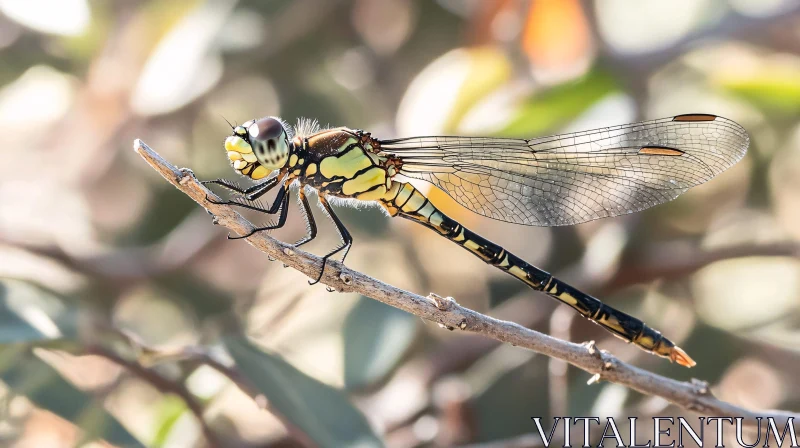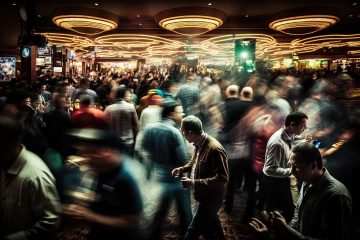Nature has always inspired artists. Now, AI is giving that inspiration a digital boost. Artists are using artificial intelligence to create breathtaking images of wildlife. One of the most popular subjects? Butterflies. These delicate, colorful creatures are perfect for AI experiments. With tools that learn from real photos, AI can generate new butterfly designs that appear realistic — but never existed in reality. HD AI dragonfly are already making waves in digital art, and butterflies are leading the charge.
Why Butterflies Work So Well with AI
Butterflies are visual magic. Their wings are adorned with intricate patterns, vibrant colors, and perfect symmetry. That makes them ideal for AI training. The algorithms study thousands of real butterfly photos. They learn how scales form patterns. How colors blend. How light reflects off wings.
Then, they create something new. A blue morpho with golden swirls. A monarch with galaxy-like spots. These aren’t edits. They’re original creatures born from code.
The results feel real. They move like real butterflies in animations. They’re detailed enough to zoom in and still believe.
Artists love this freedom. They don’t need a camera or a jungle. Just a prompt, and the AI delivers a new species.
The Tools Behind the Magic
Creating these images doesn’t require coding skills. Simple apps and websites let anyone generate Butterfly AI Pics. You type a description — like “purple butterfly with neon edges, jungle background” — and the AI builds it in seconds.
Some tools use text-to-image models. Others let you tweak wings, colors, or lighting with sliders. The best part? You can keep going. Try a new color. Change the shape. Mix in flowers or rain.
These tools are getting smarter. They understand light. They know how wings cast shadows. They can place a butterfly on a leaf so perfectly, you’d think it was photographed.
And the files are high quality. Ready for prints, phone wallpapers, or even fashion designs.
Animals AI Images in Galleries and Design
Animals AI Images aren’t just for fun. They’re showing up in serious spaces. Digital art galleries now feature AI-generated wildlife. Some pieces sell for hundreds of dollars.
Interior designers use them in homes. A large print of an imaginary butterfly on a living room wall. A series of AI birds flying across a hallway. Fashion brands are printing these designs on scarves, dresses, and sneakers. The patterns are unique. No two AI butterflies are the same.
Even book covers and album art use these images. They grab attention. They feel fresh. They blend nature with fantasy. And because they’re digital, they’re easy to share. One artist in Spain can inspire another in Japan with a single post.
Butterfly AI Pics: More Than Just Pretty Pictures
AI beetle art pictures are not just art. They’re helping people connect with nature — especially those who rarely go outside. City dwellers see these images online. They pause. They zoom in. They learn the names of real butterflies. Some even start gardens to attract real ones.
Teachers use AI butterfly images in class. They show students how patterns evolve, how colors warn predators, and how climate affects the development of wings.AI doesn’t replace real nature. It sparks curiosity. It makes science feel exciting. And for artists, it’s a new kind of collaboration. Human imagination guides AI. The machine brings speed and detail. Together, they create something neither could alone.
Ethics and the Line Between Real and Fake
But there are concerns. What if people can’t tell AI images from real photos?
Some worry this could hurt conservation efforts. If fake butterflies look real, will people care less about saving the actual ones? Also, who owns these images? The AI company? The artist who wrote the prompt? The photographer whose work trained the AI?
There are no clear answers yet. But many artists are labeling their work. They’re honest about using AI. They credit real nature as the inspiration. Transparency helps. So does using AI to support, not replace, real-world conservation.
From Screens to Public Spaces
These images are moving beyond phones and laptops. Cities are using them in public art.
Digital billboards show giant, animated butterflies flying over streets. Museums project AI butterflies in dark rooms, creating immersive experiences. One park in Tokyo installed a light display with AI-generated butterflies that respond to movement. When you wave your hand, they flutter away.
Schools are doing similar projects. Kids design their butterflies using simple AI tools. Then they see them come to life on a screen. It’s fun. It’s creative. It teaches both technology and nature simultaneously.
The Future of AI in Nature Art
This is just the beginning. AI will continue to improve at mimicking and enhancing natural processes.
We might see entire AI forests—digital coral reefs. Herds of Animals AI Images roaming virtual savannas.Butterflies will still be a favorite. They’re small, beautiful, and full of meaning. Symbols of change. Of fragility. Of hope.
With AI, artists can explore those ideas in new ways. They can make butterflies that glow in the dark. That changes color with the mood. They carry hidden messages in their wing patterns.
As more people discover Butterfly AI Pics, the line between art, technology, and nature will continue to blur. The wild won’t be just outside. It’ll be on our screens, in our homes, and inside our imaginations — reborn through AI.



